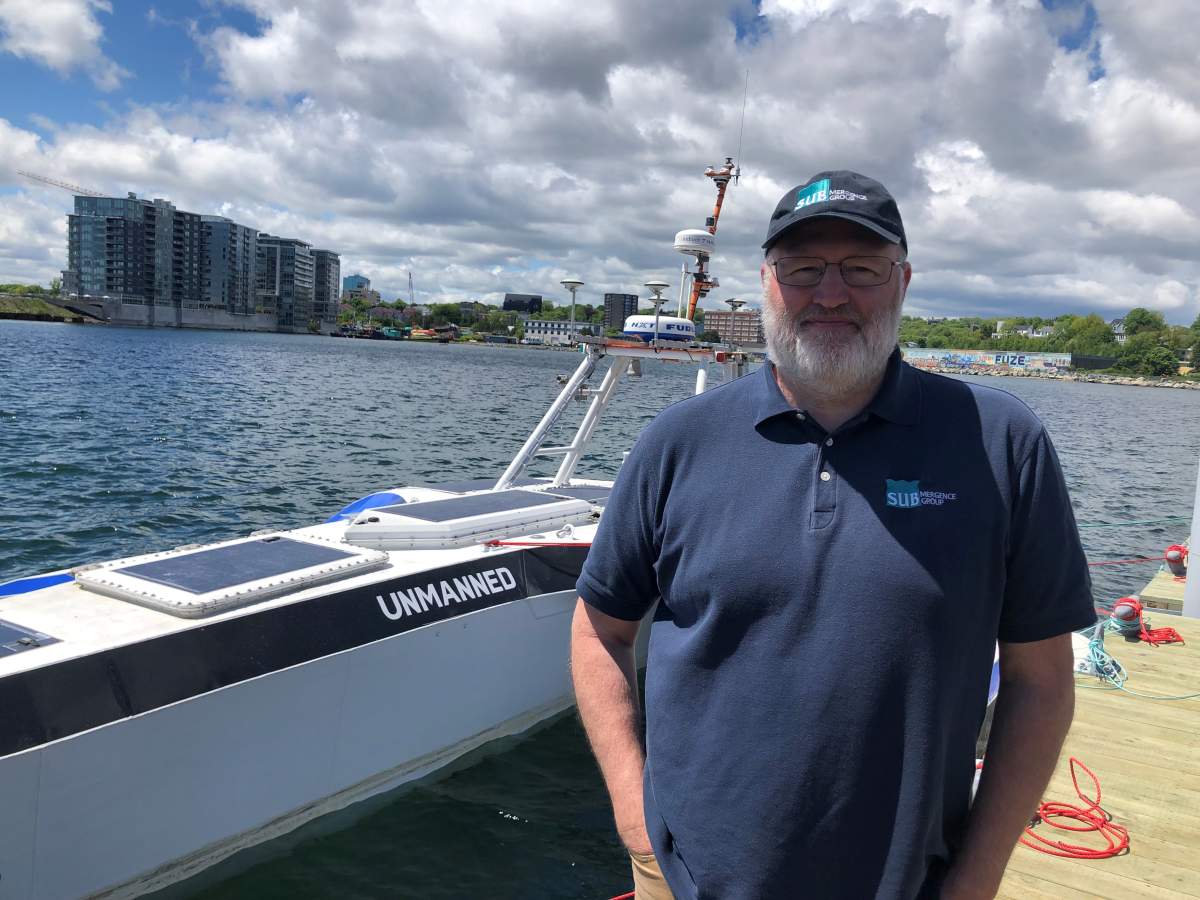A fully autonomous, robotic ship is spending the next two weeks in Halifax after diverting to the city during its transatlantic trip.

The Mayflower Autonomous Ship has no crew and is powered by artificial intelligence. Despite a slight hiccup, the vessel just became one of the first of its kind to cross the Atlantic.
“I’m thrilled that it made it and it still all feels a little surreal,” said Brett Phaneuf, the project’s director, a submarine builder by trade and a robotics expert, who has spent the past six years working on the ship.
The ship left Plymouth, U.K., in April destined for Massachusetts. But after experiencing some technical glitches west of the Azores, Phaneuf said he and his team decided to re-route the vessel to Nova Scotia.
“We started to see these little electrical problems and we made the decision to turn to Halifax,” said Phaneuf.
“She’s still operational, ready to go, but we’re going to clean her up, open her up, figure out exactly what didn’t happen right and fix it up.”
Phaneuf said the ship’s original intention was to recognize the 400th anniversary of the 1620 voyage of the Mayflower, the ship that brought an early group of settlers to America. But, he said, the 21st-century version of the vessel also calls into question what the next 400 years of marine research will look like.

Get daily National news
“For us, it’s automation and autonomy and more and more resolute complex sensors that we can deploy on low-power platforms to get data about oceans and our climate. And so Mayflower is sort of the test asset for that,” he said, adding that the Mayflower is picking up all kinds of information along the way.
“It’s a research vessel about artificial intelligence and unmanned systems in the maritime context, but it also gathers all sorts of information about the ocean: oxygen content, CO2 content, fluorometry, it does the pH of the water, the temperature, the depth.”
Unmanned vessels aren’t a replacement for manned ones, said Phaneuf, but act as a complement to complex research at sea.
“So when you think about a ship, most of the ship is designed to keep the people alive in the environment where they’re going. This doesn’t have to worry about that, it’s just a pure machine. So we can dedicate more of the total ship to research and we can drive the cost to build the ships down, so we can have more of these things out communicating with space-based assets, collecting data and looking for the bits of information — or the bits of data that we lack, the puzzle pieces we need — so we understand the climate better.”
Despite being unmanned and all alone at sea, Phaneuf said the Mayflower would not have been a success without the big crew behind it — a team consisting of members in 10 different countries.
“That’s the ironic thing about the autonomous ship project: Yeah, there are no people on the ship, but what made the project worth doing and what made it a success is the fantastic group of people working together to make it work,” said Phaneuf.
“The goal was always to make the attempt to cross; we weren’t concerned if we made it. We wanted to see how far we could get, how far we could take the technology.”
The Mayflower Autonomous Ship will spend two weeks in Halifax before taking off once again for Massachusetts to complete the route of its namesake four centuries ago.









Comments